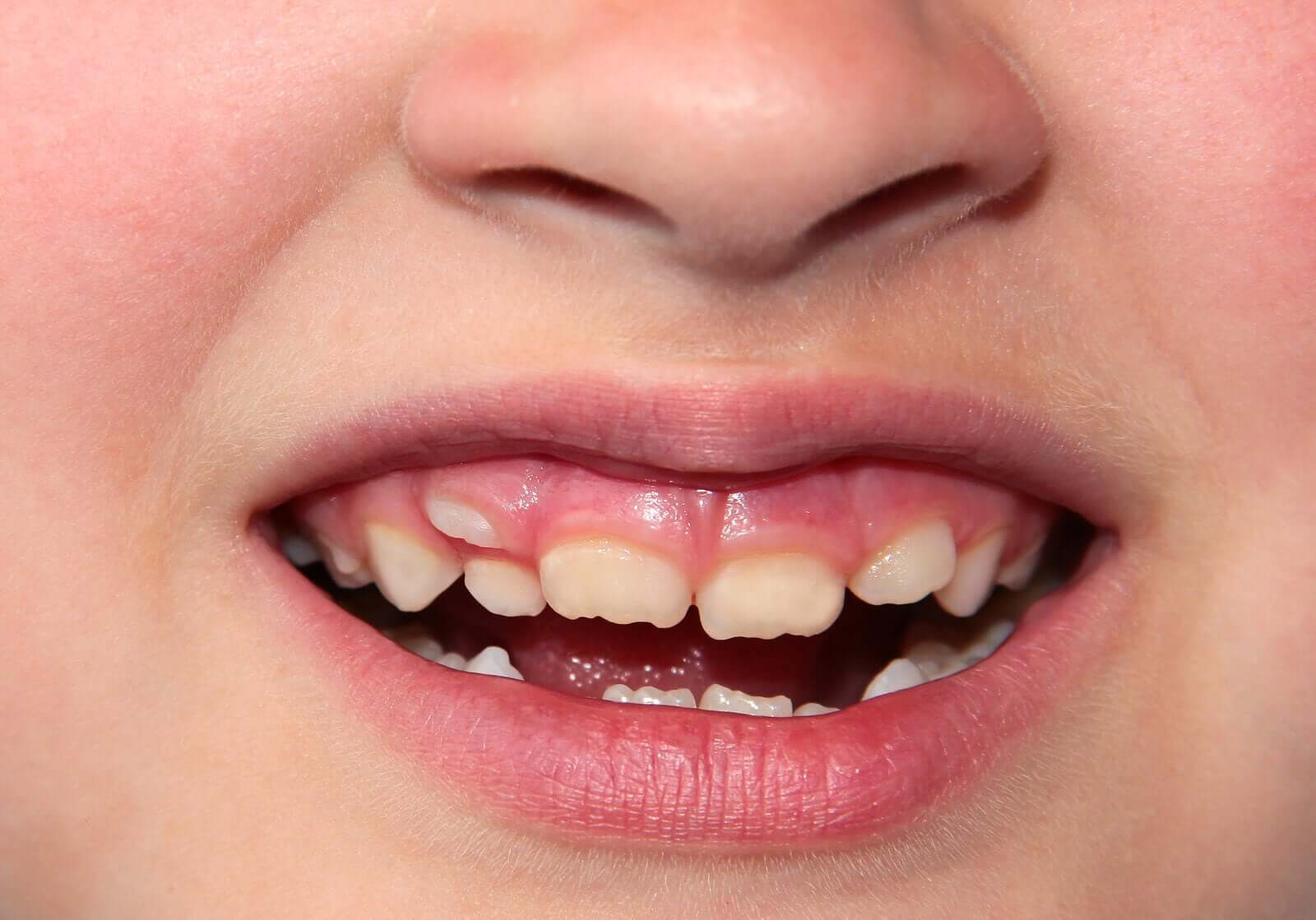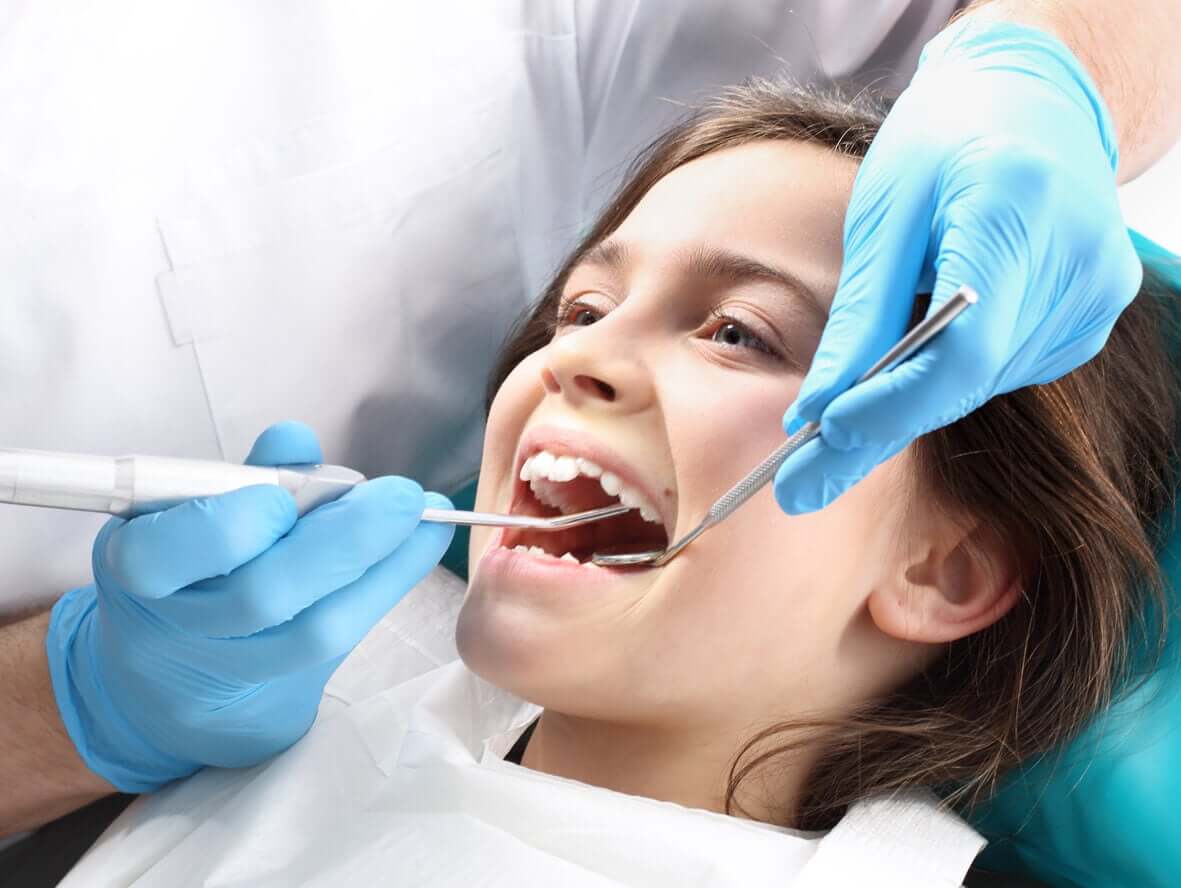Double Row of Teeth in Children: What To Do?

Consultations regarding the appearance of a double row of teeth in children are quite frequent. This phenomenon occurs during the time of dental replacement and doesn’t imply anything serious.
A double row of teeth occurs when the permanent teeth erupt before the baby teeth have finished falling out. Therefore, both must coexist in the child’s mouth and cause this very particular aspect.
In this article, we’ll tell you what this phenomenon is due to and how to proceed when it occurs. Keep reading and find out more.
How does the replacement of teeth occur?
Between the ages of 5 and 6, children begin tooth replacement, in which the baby teeth fall out and the permanent teeth come out.
During childhood, the definitive pieces develop inside the bone. When they’re ready to erupt, they reabsorb the roots of the baby teeth so that they loosen and fall out. Usually, this transition ends at puberty, around the age of 12 or 13.
But, in the case of the double row, the final pieces fail to displace the temporary ones and end up erupting behind them or on the sides and slightly turned.
Causes of a double row of teeth in children
For various reasons, tooth replacement can be altered and lead to this condition. Among the most common causes, we can mention the following:
- Lack of space in the jaws
- Crooked permanent teeth
- Baby teeth with excessively hard roots
- Ankylosis to the alveolar bone
- Genetic causes

How to deal with a double row of teeth in children
A double row of teeth in children isn’t a serious problem nor should it be a cause for concern to parents. Just the same, when noticing the situation, it’s best to go to a pediatric dentist who can evaluate the condition and advise the family.
The professional can determine the possible causes and intervene if deemed necessary. Most of the time, they’ll decide to wait and control the evolution of the teeth through frequent dental visits.
The thrust of the tongue and the movements of the mouth usually bring the definitive elements to their proper place. When the baby teeth fall out and the necessary space becomes available, the permanent teeth relocate themselves into their correct position.
The dentist can suggest some practices to help the milk pieces move, such as manipulating the tooth with the hands or pushing it with the tongue. Both maneuvers should be performed gently, so as not to cause pain or bleeding.
Likewise, eating foods with crunchy and hard textures can also help. Biting on toast or an apple is a good idea to promote tooth mobility.
During periodic controls, the dentist assesses if there are changes in the location of the definitive pieces. If this doesn’t happen after a while, they may suggest the extraction of the baby tooth. Although it is a simple procedure, it requires the use of local anesthesia to extract the entire piece with its root.
In very specific cases, the use of orthodontic appliances may be recommended to favor the relocation of the definitive pieces after the temporary ones have been removed.
What not to do when there’s a double row of teeth in children
The appearance of double rows of teeth in children may cause impatience and anxiety in parents. It can even cause discomfort or a cosmetic problem for your children.
In any case, being patient is essential in order to avoid accidents that put the oral health of children at risk. In no way should you try to loosen your teeth by force. Many adults choose to pull teeth with threads, tweezers, and other household methods in order to make them fall out sooner.
These maneuvers not only scare the child, but can also fracture the tooth, damage the permanent tooth, and injure soft tissues.
Parents must accompany their children

While a double row of teeth in children isn’t a serious problem, it causes distress in families and requires attention. In general, this condition resolves itself spontaneously and doesn’t require dental interventions.
Just the same, if you notice this problem, it’s best to receive the advice of a pediatric dentist who can evaluate the situation and guide the family regarding the best course of action.
In the case in which you end up opting for an extraction, seeking frequent dental visits will help the child to become familiar with the professional. Confidence and security in the dentist are key when facing a surgical situation.
While the child has a double row of teeth, parents need to pay special attention to their oral hygiene, as this condition makes cleaning difficult and favors the accumulation of bacterial plaque. Tooth brushing should be thorough in this particular area in order to prevent diseases such as cavities and gingivitis.
With a responsible accompaniment and a lot of patience, the double row of teeth in children will be just an anecdote from childhood.
All cited sources were thoroughly reviewed by our team to ensure their quality, reliability, currency, and validity. The bibliography of this article was considered reliable and of academic or scientific accuracy.
- Osaghae, I. P., & Azodo, C. C. “Shark Teeth” Like Appearance among Paediatric Dental Patients.
- de la Teja Ángeles, E. (2019). Erupción dentaria.
- Bhuvaneswarri, J., & Chandrasekaran, S. C. (2018). Failure of eruption of permanent tooth. International Journal of Applied and Basic Medical Research, 8(3), 196.
- Spir, J. F. (1995). Falla primaria de erupción reporte de dos casos. Revista CES Odontología, 8(1), 92-95.
- Frazier-Bowers, S. A., Koehler, K. E., Ackerman, J. L., & Proffit, W. R. (2007). Primary failure of eruption: further characterization of a rare eruption disorder. American Journal of Orthodontics and Dentofacial Orthopedics, 131(5), 578-e1.
- Ayala Pérez, Y., Carralero Zaldívar, L. D. L. C., & Leyva Ayala, B. D. R. (2018). La erupción dentaria y sus factores influyentes. Correo Científico Médico, 22(4), 681-694.